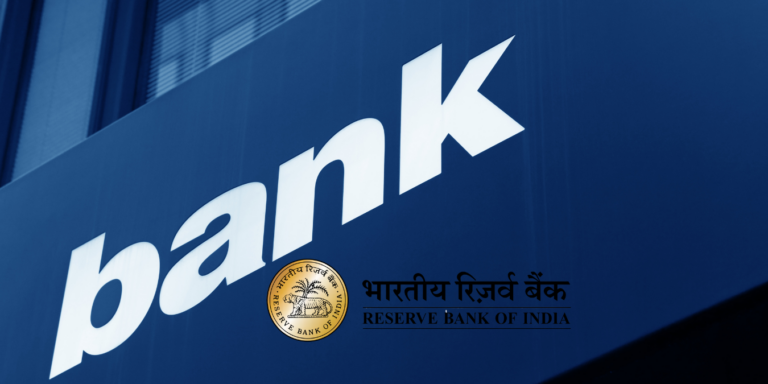
Axis Bank Q4 Results 2025: Net profit dips marginally to ₹7,118 crore. Discover key financial insights, YoY comparisons, NPA trends & revenue breakdown. Why did profits decline? How does Axis Bank plan to bounce back? Read the full analysis now!
Axis Bank, one of India’s leading private sector banks, announced its financial results for the fourth quarter of the fiscal year 2024–25 (Q4 FY25) on April 24, 2025. The bank reported a marginal decline in its standalone net profit, which stood at ₹7,118 crore for the January–March quarter, compared to ₹7,129 crore in the same period last year. This slight dip, attributed to higher loan loss provisions and lower trading income, has drawn significant attention from investors and analysts alike. In this comprehensive blog post, we dive into the details of Axis Bank’s Q4 results, analyze key financial metrics, and explore the implications for the bank’s future growth. With the latest data and insights, this article is crafted to provide valuable information for stakeholders.
Overview of Axis Bank Q4 FY25 Results
Axis Bank, India’s third-largest private sector lender by market capitalization, released its Q4 FY25 earnings, showcasing a mixed performance. The bank’s net profit for the quarter ending March 31, 2025, was ₹7,117.5 crore, a marginal decline of 0.2% year-on-year (YoY) compared to ₹7,129.67 crore in Q4 FY24. Despite surpassing analyst expectations of ₹6,773 crore (as per a Livemint poll), the flat profit growth reflects challenges such as increased provisions and muted trading income. However, the bank demonstrated resilience in other areas, with a 5.5% YoY increase in net interest income (NII) and improvements in asset quality.
Key Financial Highlights
- Net Profit: ₹7,118 crore in Q4 FY25, down marginally from ₹7,129 crore in Q4 FY24.
- Net Interest Income (NII): Rose 5.5% YoY to ₹13,811 crore from ₹13,089 crore.
- Total Income: Increased 6% YoY to ₹38,022 crore from ₹35,990 crore.
- Gross Non-Performing Assets (GNPA): Improved to 1.28% from 1.46% quarter-on-quarter (QoQ).
- Net Non-Performing Assets (NNPA): Slightly declined to 0.33% from 0.35% QoQ.
- Dividend: Declared a final dividend of ₹1 per equity share for FY25, subject to shareholder approval.
- Balance Sheet Growth: Total balance sheet grew 9% YoY to ₹16,09,930 crore as of March 31, 2025.
These metrics highlight Axis Bank’s ability to maintain stability despite a challenging economic environment, with improvements in asset quality and steady growth in core income streams.
Breaking Down the Numbers: What Drove the Performance?
1. Marginal Decline in Net Profit
The slight dip in net profit to ₹7,118 crore was primarily due to higher loan loss provisions and a decline in trading income. Provisions for the quarter stood at ₹1,359 crore, down significantly from ₹2,156 crore in Q3 FY25 but still a notable factor impacting profitability. The bank’s non-interest income, which includes fees, trading, and miscellaneous income, remained flat at ₹6,780 crore YoY but grew 14% sequentially. This flat growth in non-interest income, coupled with increased provisions, offset gains in other areas, resulting in the marginal profit decline.
Despite the decline, Axis Bank outperformed analyst estimates, which had projected a net profit of ₹6,753 crore. This resilience underscores the bank’s robust operational framework and strategic focus on core banking activities.
2. Growth in Net Interest Income
Axis Bank’s NII, a critical indicator of core banking performance, grew 5.5% YoY to ₹13,811 crore in Q4 FY25, compared to ₹13,089 crore in Q4 FY24. This growth was driven by a 6.9% YoY increase in total interest earned, which reached ₹31,242.51 crore. However, the net interest margin (NIM) declined slightly to 3.97%, reflecting pressures from rising funding costs and a competitive lending environment. Analysts had anticipated NII to be around ₹13,792 crore, and the bank’s performance was in line with these expectations.
The steady NII growth highlights Axis Bank’s ability to expand its lending portfolio while managing interest expenses effectively. The bank’s focus on high-yield retail and small business loans contributed significantly to this metric.
3. Asset Quality Improvements
One of the standout aspects of Axis Bank’s Q4 results was the improvement in asset quality. The gross NPA ratio declined to 1.28% from 1.46% QoQ, and the net NPA ratio improved marginally to 0.33% from 0.35% QoQ. On a YoY basis, the gross NPA ratio improved from 1.43%, while the net NPA ratio saw a slight uptick from 0.31%. The reduction in gross NPAs to ₹14,490 crore from ₹15,850 crore in Q3 FY25 reflects the bank’s proactive measures in managing credit risks and recoveries.
The bank’s provision coverage ratio and liquidity coverage ratio (LCR) of 118% on a consolidated basis further demonstrate its strong risk management practices, positioning it well to navigate potential economic uncertainties.
4. Loan and Deposit Growth
Axis Bank reported an 8% YoY growth in advances, reaching ₹10,40,811 crore as of March 31, 2025. Retail loans, which constitute 60% of the net advances, grew 7% YoY and 3% QoQ to ₹6,22,897 crore. The small and medium enterprise (SME) loan book, a key focus area, grew 14% YoY to ₹1,18,521 crore, while the corporate loan book expanded by 8% YoY.
Deposits grew 8.4% YoY to ₹11.6 lakh crore, aligning with analyst expectations. However, the slower loan growth compared to previous quarters indicates a cautious approach amid economic headwinds. The bank’s ability to maintain deposit growth while diversifying its loan portfolio underscores its balanced growth strategy.
5. Dividend Announcement
Axis Bank’s board recommended a final dividend of ₹1 per equity share for FY25, subject to approval at the annual general meeting. This move reflects the bank’s confidence in its financial stability and commitment to delivering value to shareholders, even in a quarter with flat profit growth.
Strategic Initiatives and Future Outlook
Axis Bank’s Q4 performance reflects its strategic focus on sustainable growth, digital transformation, and customer-centric innovation. The bank has been investing heavily in technology to enhance its digital banking platforms, with initiatives like the Axis Mobile App and WhatsApp Banking gaining traction among customers. These efforts have bolstered fee income, which grew 12% YoY to ₹6,338 crore in Q4 FY25.
The bank’s emphasis on expanding its SME and retail loan portfolios has also paid dividends, with these segments driving loan growth. Additionally, Axis Bank’s diversified loan book, spanning retail, SME, and corporate segments, provides a buffer against sector-specific risks. The improvement in asset quality further strengthens the bank’s balance sheet, positioning it to capitalize on growth opportunities in FY26.
Challenges Ahead
Despite the positive aspects, Axis Bank faces challenges that could impact its future performance:
- Margin Pressure: The decline in NIM to 3.97% reflects rising funding costs and intense competition in the lending space. Sustaining NII growth while managing margins will be critical.
- Loan Growth: The 8% YoY growth in advances is slower than previous quarters, indicating a cautious approach. Accelerating loan growth without compromising asset quality will be a key focus.
- Provisions: While provisions decreased QoQ, the YoY increase highlights the need for continued vigilance in managing credit risks, especially in the retail segment.
Analyst Perspectives
Analysts remain cautiously optimistic about Axis Bank’s outlook. The bank’s ability to surpass profit estimates and improve asset quality has been well-received. However, concerns about margin compression and slower loan growth have led some brokerages to revise their target prices. The stock closed at ₹1,208.5 on the NSE on April 24, 2025, up 0.13%, reflecting stable investor sentiment.
Why Axis Bank’s Q4 Results Matter for Investors
For investors, Axis Bank’s Q4 FY25 results offer a mix of reassurance and caution. The marginal profit decline is not alarming, given the bank’s outperformance of estimates and improvements in asset quality. The 5.5% NII growth and 8% advance growth signal steady core operations, while the dividend announcement reinforces shareholder value. However, the challenges of margin pressure and slower loan growth warrant close monitoring.
Investors should consider the following:
- Long-Term Growth: Axis Bank’s focus on digital banking and SME lending positions it for sustained growth in a digital-first economy.
- Risk Management: The improvement in GNPA and NNPA ratios reflects robust risk management, making the bank a relatively safe bet in the banking sector.
- Valuation: With a strong balance sheet and diversified portfolio, Axis Bank remains an attractive investment, though investors should watch for macroeconomic factors affecting margins.
What’s Next for Axis Bank
Axis Bank’s Q4 FY25 results, with a net profit of ₹7,118 crore, reflect a resilient performance amid challenging conditions. While the marginal profit decline highlights pressures from provisions and trading income, the bank’s growth in NII, improvement in asset quality, and strategic focus on digital and SME lending paint a positive picture for the future. For stakeholders tracking Axis Bank Q4 results 2025, net profit decline, or banking sector performance, these results underscore the bank’s ability to navigate economic headwinds while laying the groundwork for long-term growth.
As Axis Bank continues to innovate and expand, it remains a key player in India’s banking landscape. Investors and analysts will closely watch its performance in FY26, particularly in sustaining NII growth, managing margins, and accelerating loan expansion.
Disclaimer: The information provided is for educational purposes only and should not be considered financial advice. Consult a financial advisor before making investment decisions.






























